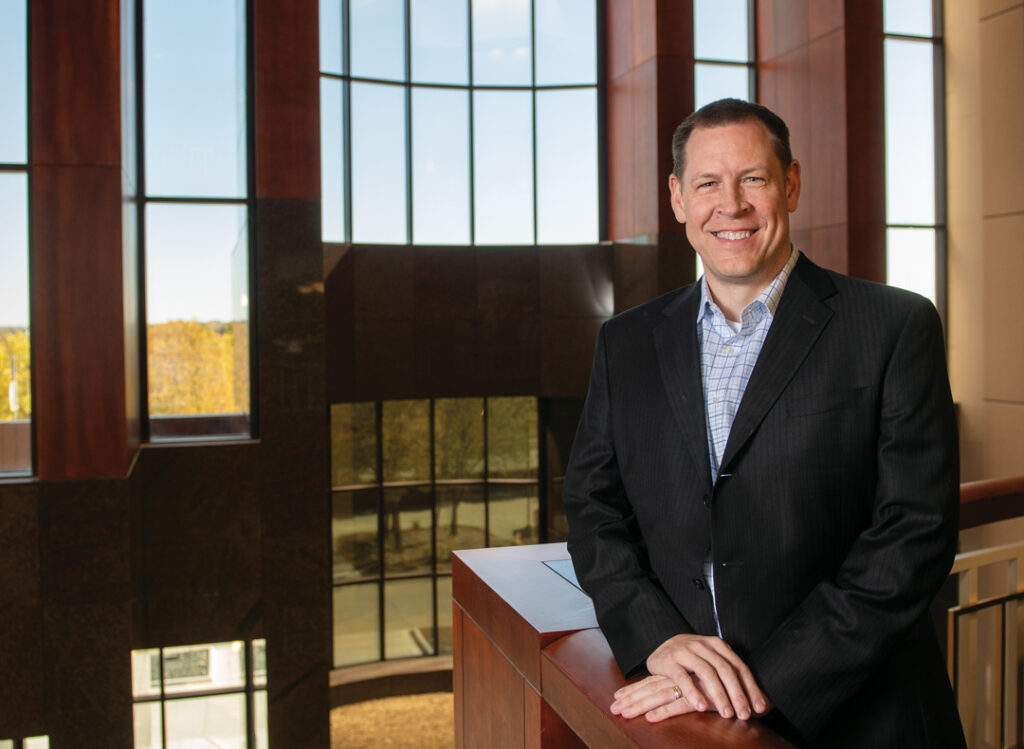A Closer Look: Kim Perez
President and CEO, Greater Des Moines Botanical Garden

MICHAEL CRUMB Oct 27, 2021 | 8:20 pm
5 min read time
1,108 wordsA Closer Look, Arts and Culture, Business Record Insider
Kim Perez began her new role as president and CEO of the Greater Des Moines Botanical Garden in April. She has spent her career in the nonprofit sector, mostly working with children, families and community-based services, with more than a decade serving as CEO. Before coming to Des Moines, Perez worked at Cradle, a suburban Chicago-based adoption agency. Saying she’s “not bad” at raising plants at home, Perez said there are similarities between running programs that serve children and families and operating the nonprofit Botanical Garden, and she looks forward to incorporating her philosophy and expanding the garden’s role in the community.
How has your background in community-based programs helped prepare you for your new role leading a botanical garden?
Our mission is focused on plants, the education around plants, and the curation of these beautiful plants and helping people feel connected to plants. But the way we bring our mission to life is still about people coming to us and enjoying what we’ve curated, what we’ve cultivated, what we’ve grown and nurtured. Those are the same things we do in a community, right? People have to be nurtured to grow; that’s my background, growing children, helping them … be raised and feel safe and engaged in a community setting within a family, and much of that is still very much present in the work of a public garden. Yes, the work we do centers around these plants, but it’s how do we bring these plants to the community? How do we build those bridges when you might not have the opportunity to have a conversation with someone, except here, at the garden, where you have something in common and you can appreciate the beauty, or you can come and find some peace. Right now, the Botanical Garden is lifting our head up, looking around and saying, where can we help solve community problems, how can we give back to the community, and where are there things happening where we could add value?
What are some of those opportunities for greater community engagement?
One thing we’re doing is developing a Water Smart Garden. One of the expansions is the native Iowa dry meadow, and that’s a sandy soil mixture and those plants don’t need a lot of water. They don’t need a lot of irrigation, so we are actively part of more and more conversations around water quality and conservation and the role plants play in the ability for us as a community to influence those water-based conversations. So water quality education is something we’re partnering with a number of different location organizations to advance the programming we offer here at the garden. Our angle for that conversation is that with enough information, we in our backyards at home can choose plants that don’t require as much water and they’re still beautiful and they’re still what you would expect to see in Iowa, and how we in our own home gardens make those choices that then have some broader community impact in terms of water conservation. This is an example of ways the Botanical Garden can take what we know and bring it to the community in different ways. It’s a little bit of a shift, but we think it’s one that’s going to be impactful.
What goals do you have in your new role?
It’s a clear two-pronged approach. We have 14 acres of land here and we are only occupying about 7 acres, so we will be doubling our footprint in the next decade. So expanding those gardens, making sure we can use that opportunity to accomplish some of that community engagement. We want to capture as much as we can in terms of our ability to interact with those who come and visit Des Moines, and those who live in Greater Des Moines. We will be focused on interacting more intentionally with the John Pat Dorrian Trail. How can we be more welcoming, more accessible along the trail? How can we engage more families and people of all different backgrounds in ways that we’ve not yet done before? So part of our expansion will include intentional and purposeful connections to family garden spaces. Ways to interact and engage with children at younger ages. The second prong is really about how we take the mission of the garden out of our borders and into the community. Maybe there are ways we can bring a growing experience to a young child in a school. Bringing partnerships together to bring plant education and our mission to life. One of the ways we’re approaching our programming is around the reality that the plants in our collection represent places all around the globe, as do our neighbors. How can we create opportunities to tell those stories, the plant stories, the people stories, to build bridges and help people know they are welcome here and that we might have something that feels like home.
Tell us about your management style.
I think because I’m a social worker it is really one that is incredibly collaborative. I want to surround myself with people who are passionate about what they’re doing, who are smart in their own way. I don’t need to know everything, and I don’t need to be a decider on everything there is to decide. I really want to surround myself with a group of quality people that are qualified and capable. I want to be part of a team. I’m just like everybody else. I just happen to have the title of CEO. So my management style is really open-door, member of the team and really that collaborative focus. My primary job is to leave this garden better than I found it, and that’s really easy to do with a team of people who are super passionate and wanting to move this organization forward.
What is it about the Botanical Garden that you think most people in the community don’t know?
As a person who is new to public gardens and as a person who’s not a master gardener, I’ve learned so much not through taking classes, but just by being present. You don’t have to have the highest level of understanding of plants to be able to learn something and take it home or just, frankly, come and enjoy what’s here. There’s something for everyone. This is also a place with a lot of opportunities to volunteer. If we can be part of the community that invites people in who hadn’t thought of us before. You don’t have to know plants, but if you do, there’s also something to benefit from if you come and visit.










